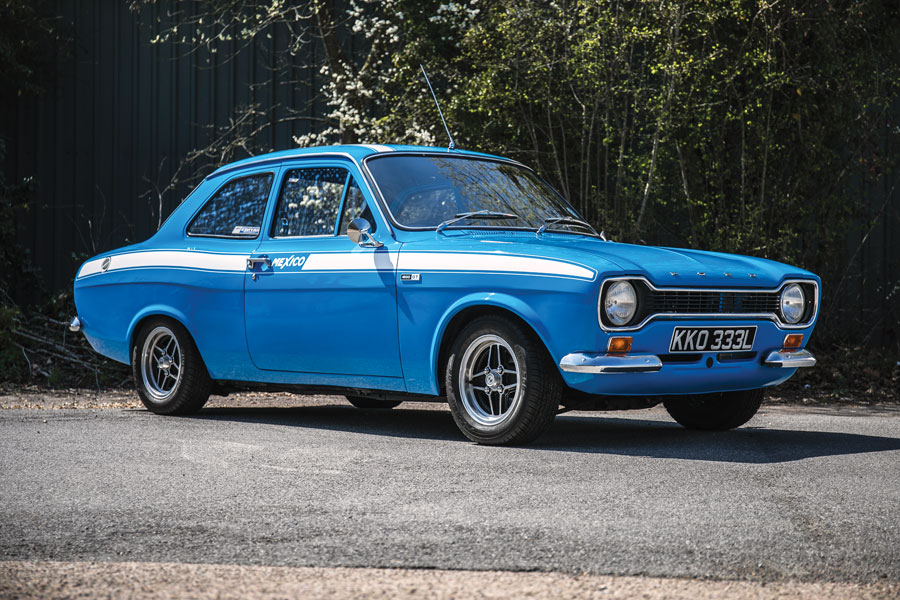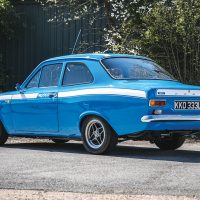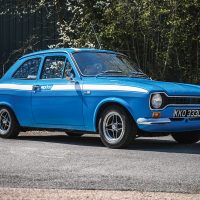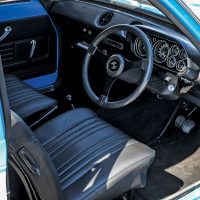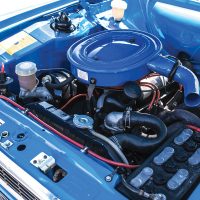SCM Analysis
Detailing
| Vehicle: | 1973 Ford Escort 1600 Mexico |
| Years Produced: | 1970–74 |
| Number Produced: | 10,352 |
| SCM Valuation: | $45,571 |
| Tune Up Cost: | $100 |
| Chassis Number Location: | Plate on bonnet slam panel |
| Engine Number Location: | Lower left on block |
| Club Info: | RS Owners’ Club |
| Website: | http://www.rsownersclub.co.uk |
| Alternatives: | 1972 Hillman Avenger Tiger, 1972–74 Ford Escort RS2000 Mk1, 1966–77 BMW 1600/2/1602 |
This car, Lot 196, sold for £37,400 ($45,533), including buyer’s premium, at Silverstone’s May Live Online Auction on May 23, 2020.
Silverstone has offered this car twice in the past 14 months, and both times narrowly failed to sell it.
As an interested Mk1 owner, I had a good look around our subject car last summer, and it appeared correct in every detail. These cars have been widely faked — including my own bitsa “RS2000” — but here the Type 49 bodyshell has, as well as the wide-lip front wheelarches, all the correct strengthening pieces, plus the rear-axle radius arms and the row of captive bolts to mount a skid shield under the trunk floor.
Not all cars were fitted with the skid — a Rallye Sport optional extra — but they all have the mounts. In period, lots of these cars were campaigned on rallies, and Ford capitalized on this by offering factory-approved performance parts from a network of Rallye Sport Centres.
Lots of original bits
It’s always been hard to resist “improvements” with the amount of tuning kit available for them, but while many of these have had hop-up parts added, such as adjustable track control arms and/or rear disc brakes, this well-restored car appeared completely standard.
The exceptions are the 60-profile tires which looked slightly too small for it and, last time I saw it, a “rubber band” 50-profile on the spare. This is easy to fix: 13-inch rubber choice has been limited over the past couple of decades, although more sizes are available now. Originally, it would have had 175/70s.
Our subject car even appeared to retain the 4-speed gearbox, where many have had Type 9 5-speeds substituted (they weigh a ton… especially when resting on your chest), and the motor looked completely standard — still with a twin-choke carb.
Many of these cars have grown twin Weber DCOEs, which pushes power from the standard 84 bhp to around 100. For comparison, the 1,558-cc Twin Cam is 105 hp and the “1,601-cc” RS1600’s BDA is 115 hp.
The mostly vinyl interior was all good, either very well-preserved original or repro, and it even has the original Haynes of Maidstone (a Rallye Sport Centre) supplying dealer sticker in the back window.
A fast winner
The Mexico really was a fine stroke of marketing: Fit the strapping RS1600 shell with the much-less-expensive 1,599-cc pushrod “Kent” engine as used in the Cortina 1600E and Ford Capri GT, and ride on the back of that rally success. This is the time-honored formula of “Win on Sunday, sell on Monday.”
The World Cup Rally cars used pushrod engines as well — instead of the Twin Cam or BDA — over fears about the more-complicated engines’ ability to tolerate poor or unknown fuel quality, plus ease of maintenance in the field.
However, the pushrod engines were bored out to 1,850 cc for extra torque. The bottom ends of all three engines are common, and the Twin Cam versions retained the original side-mounted camshaft to drive the oil pump and distributor.
The current market
Silverstone has done well with fast Fords in recent years — and has sold several Mexicos, which have always been desirable among the boy-racer element (guilty…) but are now sought-after collectors’ cars, all helped by that competition heritage.
Our subject car, for some reason, proved harder to shift than most.
I’ll keep the numbers in sterling here for consistency, because in dollars the wavering exchange rate skews the message. Last summer, it twice bid to £35k against a £40k–£46k estimate, initially at Silverstone’s first (and probably only) sale at Heythrop Park in May 2019 (Lot 305), and then the same again at the Silverstone Classic sale in July 2019 (Lot 452), which to me is the market speaking at a time when prices across the board were on a downward slide.
The seller, a Ford collector given to periodic reshuffles, felt otherwise, and both times took it away unsold. This time, the seller accepted a top bid of £34,000, which looked a pragmatic decision at a very fair price today.
Hindsight’s a wonderful thing. ♦
